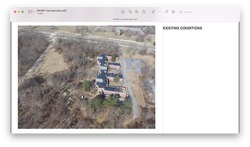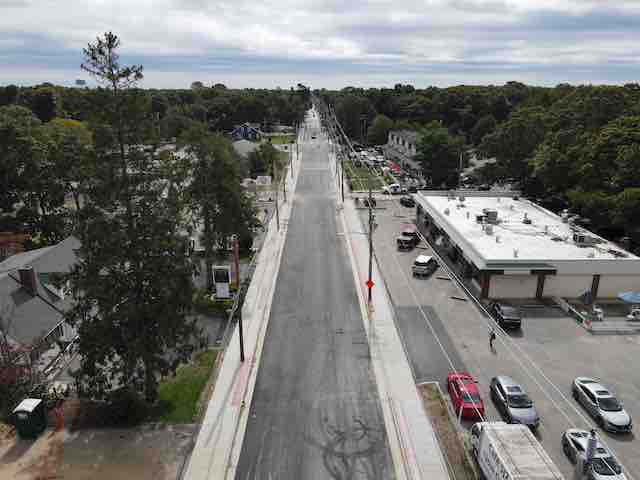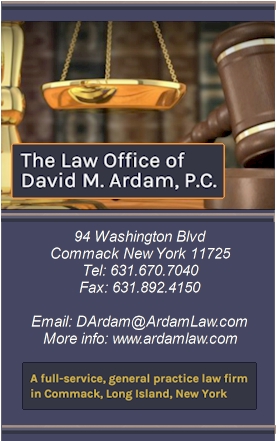Dedication of Richard Smythe Statue
 Saturday, September 19, 2015 at 2:37PM
Saturday, September 19, 2015 at 2:37PM Special thanks to Chris Damianos and the Damianos family for commissioning this wonderful tribute to Smithtown history.
Hundreds of people were in attendence as the statue of Richard (Bull) Smythe was unveiled Saturday morning. The statue is permanently located at the Colony Building located at the intersection of Rte. 111 and Middle Country Rd.
Remarks about Richard Smythe on the occasion of the dedication of his statue at 10:30 in the morning of Sept. 19th, 2015: By Town Historian Bradley Harris
 Good morning ladies and gentlemen. We are gathered here today to pay homage to the man who founded Smithtown 350 years ago. That man was Richard Smythe, an Englishman who was given a patent on March 3, 1665 by the English Governor of the colony of New York, Richard Nicolls. A patent is much like a land grant, and in Richard Smythe’s case, it was a document that validated Richard Smythe’s claim of ownership to the land of the Nesaquake Indians. The puzzling question is how Richard Smythe, an obscure Englishman who never had any dealings with the Nesaquake Indians, came into possession of their lands.
Good morning ladies and gentlemen. We are gathered here today to pay homage to the man who founded Smithtown 350 years ago. That man was Richard Smythe, an Englishman who was given a patent on March 3, 1665 by the English Governor of the colony of New York, Richard Nicolls. A patent is much like a land grant, and in Richard Smythe’s case, it was a document that validated Richard Smythe’s claim of ownership to the land of the Nesaquake Indians. The puzzling question is how Richard Smythe, an obscure Englishman who never had any dealings with the Nesaquake Indians, came into possession of their lands.
Richard Smythe came to America aboard the ship known as the John of London that sailed from England on October 2, 1635. Why 22 year old Richard Smythe chose to immigrate to America at this time is not known. The first definitive mention we have of Richard Smythe on Long Island appears in the town records of Southampton. Richard Smythe was not one of the original proprietors of Southampton in 1640, but joined the settlement in 1643. He was chosen “freeman” of the town. His wife, thought to be Sarah Hammon, was 17 or 18 years old at the time she married 28-year-old Richard Smythe. Since the Smythes had their first child, a boy named Jonathan in 1641, they must have been married before they settled in Southampton. But we have no record of their marriage. We do know know that Sarah and Richard eventually had seven sons and two daughters and five of these children were born while the Smythes lived in Southampton.
Richard Smythe was a leader in Southampton. His home lot was one of the larger lots in town, he had a full proprietor’s right in the settlement, and as a freeman, he was eligible to hold any office in the town. He served as a member of several committees and by a vote of the General Court, he was elected to the office of constable. Richard Smythe’s entire career in Southampton shows him to have been a respected member of his community for 13 years. Then the following entry appears in the Southampton records of September 17, 1656: “It is ordered by the General Court that Richard Smith for his unreverend carriage toward the magistrates … was adjudged to be banished out of the towne, and he is to have a week’s liberty to prepare himself to depart, and if at any time hee be found after this limited week within the town or the bounds thereof he shall forfeit twenty shillings.” There is no explanation in the records as to why he was banished. What had he done that led his friends and neighbors of 13 years to turn against him and cast him out of their town?
Dr. Frederick Kinsman Smith, the Smith family biographer, has an answer for this banishment. He believed that Richard Smythe returned to England for a visit sometime in 1655. He had not seen his parents for over 20 years and the time was right for a visit. This visit put Richard in Gravesend, England, ready to return home to Southampton aboard the ship Speedwell when it sailed on May 30, 1656. “Richard Smith, aged 43 years” is listed on the ship’s manifest. Also among the passengers were eight people “designated as Quakers.” Dr. Smith believed that Richard Smythe was in close association with these Quakers on the 10 week voyage to America, and that he adopted their views.
When the Speedwell docked in Boston on August 7, 1656, the eight Quakers and Richard Smythe were seized and thrown into prison. Richard was detained and questioned by the Boston magistrates, and then he was sent home to Southampton, where he arrived in September 1656, only to be banished for his “unreverend carriage toward the magistrates.” Dr. Smith felt that Richard Smythe got into difficulty with the Southampton townspeople because of his Quaker beliefs. His activity, which might have been as simple as his refusal to doff his hat to the town leaders, would certainly explain his “unreverend carriage toward the magistrates” and most likely led his Puritan neighbors to throw him out of the community.
The Smythes suffered a great deal of anguish and heartbreak when after 13 years they were forced to leave Southampton and sell their homestead and lands to others. The Smythes apparently went directly to the newly established community of Setauket on the north shore. They lived quietly in Setauket for the next nine years from 1656 to 1665.
Living in Setauket gave Richard a firsthand knowledge of the Nissequogue River valley area and started him thinking about obtaining these lands for himself. The lands that Smythe coveted were owned by the Nesaquake Indians who dwelt on both sides of the river. The Nesaquake tribe was in turn dominated by the largest tribe of Indians on L.I., the Montauks, and their chief Wyandanch. Wyandanch was recognized as the “ruler of all the other sachems on the east end of Long Island” and all the tribes paid tribute to him. It was understood that no conveyance of land was possible without his approval. What is surprising is that in 1659, Wyandanch gave away the Nesaquake lands to an Englishman named Lion Gardiner. Why he did this is interesting.
Lion Gardiner, patentee of Gardiner’s Island, and the first Englishman to settle on the east end of Long Island in 1639, had been a friend to Wyandanch and the Montauks for many years, and served as a counselor in all their troubles. One of the troubles that the Montauk tribe encountered happened in 1653 when Narragansett Indians paddled across Long Island Sound in their war canoes to attack the tribe. In the ensuing battle, half the Montauk tribe was killed and Wyandanch’s daughter, Princess Momone, “the Heather Flower,” was kidnapped. Wyandanch sought Lion Gardiner’s help in getting his daughter back. Lion Gardiner appealed to the Massachuetts authorities to pressure the Narrangansetts into returning Princess Momone and they did so. Tradition has it that the Princess was ransomed for a huge pile of wampum and returned to her father at Richard Smith’s house in Setauket. A grateful father and Sachem then wanted to give Lion Gardiner a token of his esteem and friendship, and in a very interesting deed known as the “deed of friendship”, dated July 14, 1659, six years after Princess Momone was rescued, Wyandanch conveyed the Nesaquake lands to Lion Gardiner. What is even more intriguing is that Richard Smythe witnessed this deed, and four years later in 1663, Lion Gardiner sold these very same lands to Richard Smythe.
It would seem that Richard Smythe may have been the instigator of the “deed of friendship.” Upon purchasing the Nesaquake lands from Lion Gardiner in 1663, Symthe immediately set about securing undisputed possession of these lands. By deeds, he carefully extinguished the ownership claims of the Nesaquake Indians and other Englishmen. Then he sought a confirmation of his land title by applying for a patent from the newly appointed English Governor of New York, Richard Nicolls. On March 3, 1665, Smythe received a patent from Governor Nicolls that confirmed his title to the lands. The patent stipulated that Smythe was to settle ten families on the lands within three years, and his settlement was to be treated like any other Town within the colony. By this document, the Nicolls Patent, and twelve more years of protracted litigation with his Huntington neighbors, Richard Smythe was finally able realize his dream of becoming a truly independent land owner and patriarch of the town of that bears his name.
Sometime after receiving the Nicolls Patent in 1665, Richard Smythe moved his family onto to the Nesaquake lands in Nissequogue and started the settlement that was to become Smythe’s Town. So now you know the real story of how Richard Smythe acquired Smithtown and, I would just like to point out, it had nothing to do with a bull.






Reader Comments